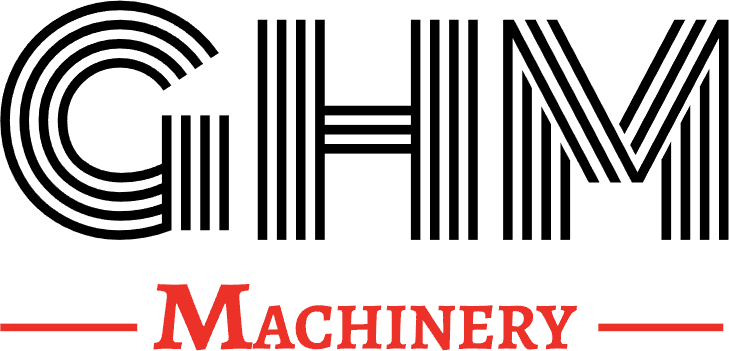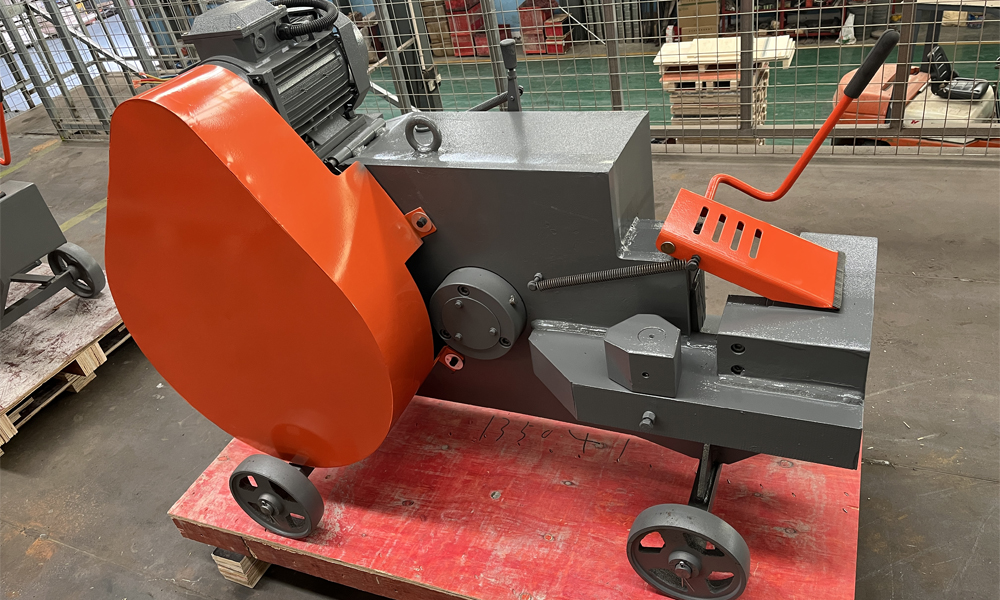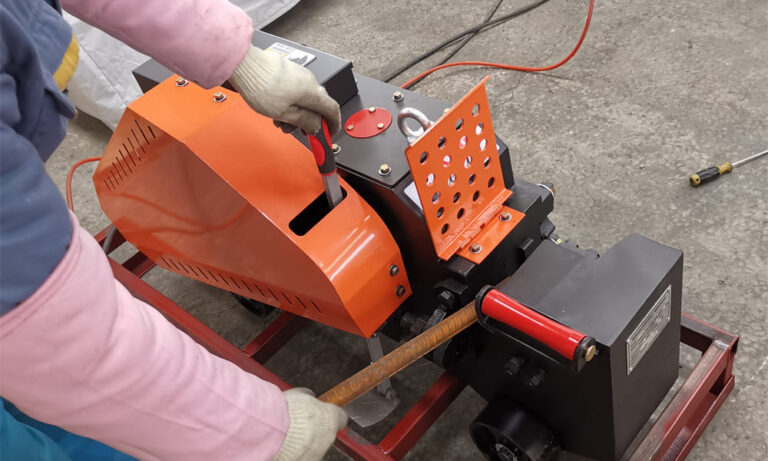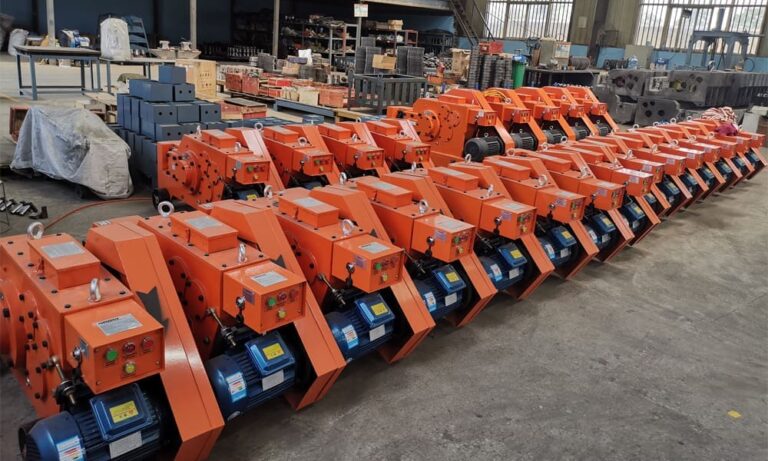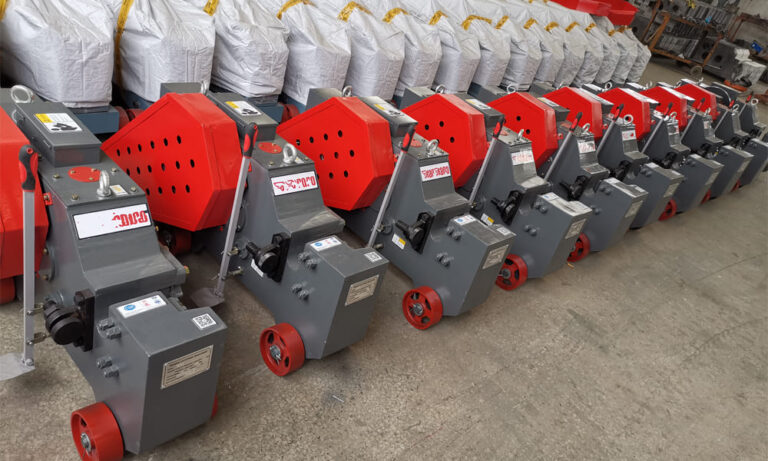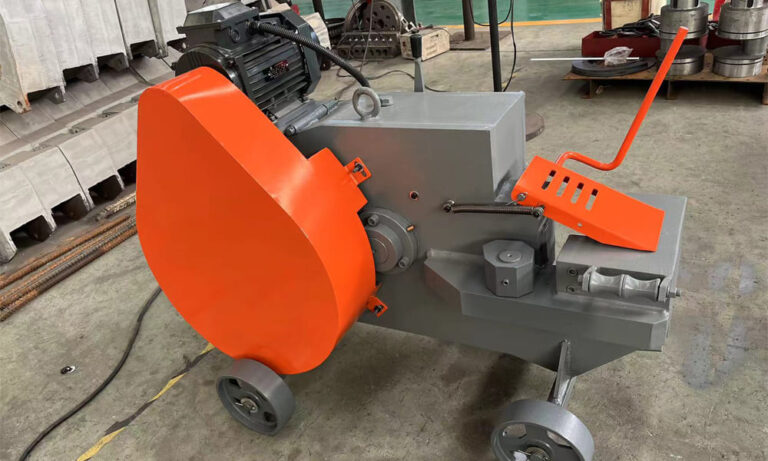Rebar cutting machines are essential tools in construction, steel fabrication, and precast concrete industries. Italian-made machines are renowned for their high precision, durability, and advanced automation, making them ideal for heavy-duty and high-volume rebar processing. Below is a detailed overview of rebar cutters, focusing on Italian brands, types, and key selection factors.
1. Top Italian Rebar Cutting Machine Brands
① MEP (Italy)
-
Key Features: Industry leader in rebar processing, offering manual, semi-automatic, and fully automated machines.
-
Popular Models:
-
MEP PR Series (Hydraulic): Cuts Ø6–50mm rebars (including HRB500 high-strength steel), with clean, burr-free cuts.
-
MEP Elettronica (CNC): Automated feeding, length measurement, and counting for precast concrete plants.
-
② MEPITALY (Italy)
-
Key Features: Compact and easy-to-maintain machines for construction sites.
-
Popular Models:
-
MEPITALY GT40: Electric-hydraulic cutter for Ø6–40mm rebars, suitable for on-site use.
-
③ Icaro (Italy)
-
Key Features: High automation, often integrated with bending and straightening systems.
-
Popular Models:
-
Icaro Cutmatic: Fully automated CNC cutter with length setting, counting, and stacking.
-
2. Types of Rebar Cutting Machine
① Manual Rebar Cutters
-
Best for: Small-scale projects, repairs.
-
Capacity: Typically ≤ Ø20mm.
-
Pros: Low cost, portable.
-
Cons: Labor-intensive, low efficiency.
② Electric-Hydraulic Rebar Cutter
-
Best for: Construction sites, rebar processing plants.
-
Capacity: Ø6–50mm (some heavy-duty models cut up to Ø60mm).
-
Pros: High efficiency, smooth cuts, handles high-strength rebars (HRB500).
-
Cons: Requires power supply, heavier than manual cutters.
③ CNC Automatic Rebar Cutter
-
Best for: Precast factories, large-scale rebar processing.
-
Features:
-
Auto-feeding
-
Precise length adjustment
-
Counting & stacking
-
-
Pros: Extremely high output (100–200 cuts/min), reduces labor costs.
-
Cons: Expensive, best for mass production.
3. Key Factors When Choosing a Rebar Cutter
-
Rebar Diameter → Match the machine’s cutting capacity (e.g., Ø12mm, Ø25mm, Ø40mm).
-
Power Source:
-
Electric: Best for fixed workshops.
-
Battery/Diesel: Suitable for remote job sites.
-
-
Automation Level:
-
Manual → Low cost, small jobs.
-
Semi-Auto → Foot-pedal operation, moderate efficiency.
-
Full-Auto CNC → Best for factories.
-
-
Brand & After-Sales Service:
-
Italian (MEP, Pedax) → High-end, reliable, but costly.
-
Chinese (Jianke, Zoomlion) → Budget-friendly, decent performance.
-
4. Maintenance & Safety Tips
✅ Maintenance:
-
Check hydraulic oil regularly (use ISO VG46).
-
Keep blades sharp to avoid jagged cuts.
-
Clean metal debris to prevent jamming.
⚠️ Safety:
-
Wear gloves & safety goggles.
-
Ensure the machine is stable before operation.
-
Use emergency stop if needed.
5. Italian vs. Chinese Rebar Cutter Comparison
| Feature | Italian (MEP, Icaro) | Chinese (GHM, TJK) |
|---|---|---|
| Price | High (€3K–€20K+) | Low (€500–€8K) |
| Precision | Excellent, clean cuts | Good |
| Durability | Long-lasting steel build | Long-lasting steel build |
| Automation | Advanced CNC options | Mostly manual/semi-auto |
| After-Sales | Global but costly | Local, faster, cheaper parts |
Final Recommendation
-
Italian Machines → Best for high-strength rebars (HRB500), automation, and heavy-duty use.
-
Chinese Machines → Good for small-to-medium projects with budget constraints.
Need a specific model recommendation? Provide:
-
Rebar diameter (e.g., Ø12mm, Ø25mm).
-
Daily workload (e.g., 500 cuts/day or 10 tons/day).
-
Power preference (Electric/Diesel/Battery).
